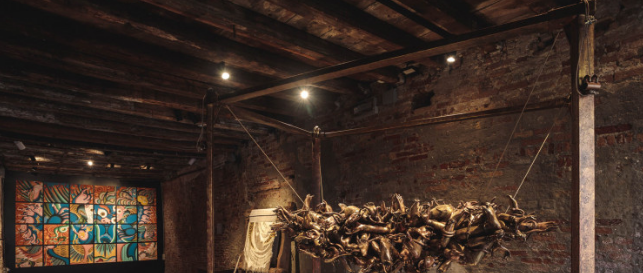One of the tenets of Nepal’s foreign policy is soft power. The official foreign policy document says Nepal’s soft power can be promoted via Nepal’s “natural beauty, unique and rich civilisation, culture, lifestyle, diversity, thought processes, art, language, literature and sport”. The policy document goes on to highlight several elements that would be utilised to promote Nepali soft power abroad—Lumbini, Pashupati, Everest, the culture of welcoming guests, and so forth.
By itself, the points highlighted in the document are commendable. But these are also generic arguments, ideas that are made to sound executable without any implementation hiccups. As we all know, Nepal’s forte is signing agreements without thinking of implementation. We’ve seen that with both the MCC and the BRI. So what is required to push Nepali soft power beyond these generic terminologies and really make the Nepal story tick beyond our borders?
Advertisement
‘Jalebi’ of laws
At the recently concluded Kantipur Conclave, where I moderated a session on Nepal’s soft power potential, all four panellists had different ideas about what could take the Nepali brand abroad. While Nepal’s unique culture and natural heritage as our soft power highlights made the headlines, many news reports missed an important takeaway from the session: The regulatory hurdles that Nepali entrepreneurs and creative artists face to take the Nepal story abroad. Nepal’s regulatory space is, in the words of a panellist, a “jalebi”—a jumble of laws and regulations that desist and discourage smooth passage of our products and services.
Consider this: Nepal got a pavilion at the prestigious Venice Biennale for the first time this year. Artist Tsherin Sherpa’s “Tales of Muted Spirits” exhibit was built on the histories and experiences of Himalayan communities, and was received as a “joyful, colourful and tactile exhibition” that “[shone] a light on Nepal, showcasing its traditional craft of carpet-weaving, the vibrant and distinctive thangkas, and its sculptural prowess.”
The Venice Biennale is to the art world what the Cannes Film Festival is to filmmaking: It is where the best in the world are feted. Yet, as a panellist recalled, Nepal’s regulatory hurdles meant the organisers waited for nine months for the required permissions, which were granted only two days before the deadline. Inside Nepal, barring a few media outlets, Nepal’s presence in Venice barely made the news.
The stories are similar across sectors—whether in the arts or entrepreneurship. Nepali stories, artists and entrepreneurs are willing to take on the world, but what’s stopping them is Nepal’s regulatory “jalebi”, a smorgasbord of archaic laws that would deter even the most courageous of our mythical heroes. Many believe the only way to succeed in Nepal is to develop a proximity towards the powers that be—whether through politicking, or by feeding them marsi chamal. For those who cannot, bad luck!
There’s a wonderful music video by the Phosphenes for their track “Yestai Nai Hola”. The video, which has over 1.7 million views on YouTube, begins in the 1970s with an energetic young man out to get permission from a government office. The civil servant asks him to come the next day, then the day after, and so on until years pass by. The future arrives in Nepal—government offices now have a hologram of the civil servant. Yet, our protagonist is asked to come the next day once again. The smile on his face disappears, wiped out by the mammoth hurdle that is Nepal’s policy environment. It is indeed a microcosm of how Nepal functions.
Many opportunities
Sectorally, there are several opportunities lying in wait for Nepal. As the success of films such as Dr Strange and Up in the Wind have shown, Nepal can harness its physical beauty as an international film location. Our brands—the Yeti, the Khukuri and the Gurkhas, Everest, to name a few—have a recall value most marketing experts would love to jump at. The Nepali thangka and sculptures travelled the world before any Nepali did. We have already acquired high levels of quality and competence in new agri-products such as coffee. Our mountaineers are the best in the world without question. And the goodwill Nepal carries everywhere is evident every time one travels outside the country.
Yet, our diaspora’s success is obscured by the politicking within our non-resident Nepali associations. This year’s FIFA World Cup will be possible only through the blood and sweat—and often lives—of those of us brave enough to withstand the heat of Qatar. We should be able to claim this story—but only if we spare a thought for migrant labour to begin with.
So what is Nepali soft power? And how can Nepal build on it? In my view, the answer to these lies in first articulating what the Nepal story itself is about. The Nepal story is not about a unique national identity—every country has one. Rather, the Nepal story in the 21st century is a story of success despite adversity, of rising above the destitution that we had inherited due to the extractive nature of Rana rule.
The Nepal story is about finding success in new lands and alien cultures. Like the great immigrant communities of the past, Nepal today cannot be encapsulated within its borders alone.
But first, we have to recognise the fact that political patronage will rarely allow for a Nepali product or service to think beyond our borders. Nepali creators, artists and entrepreneurs have taken on the world, but they need a regulatory and policy environment that allows them to do so without fear. There are a thousand stories waiting to break out, and all we need to do is let them free.











